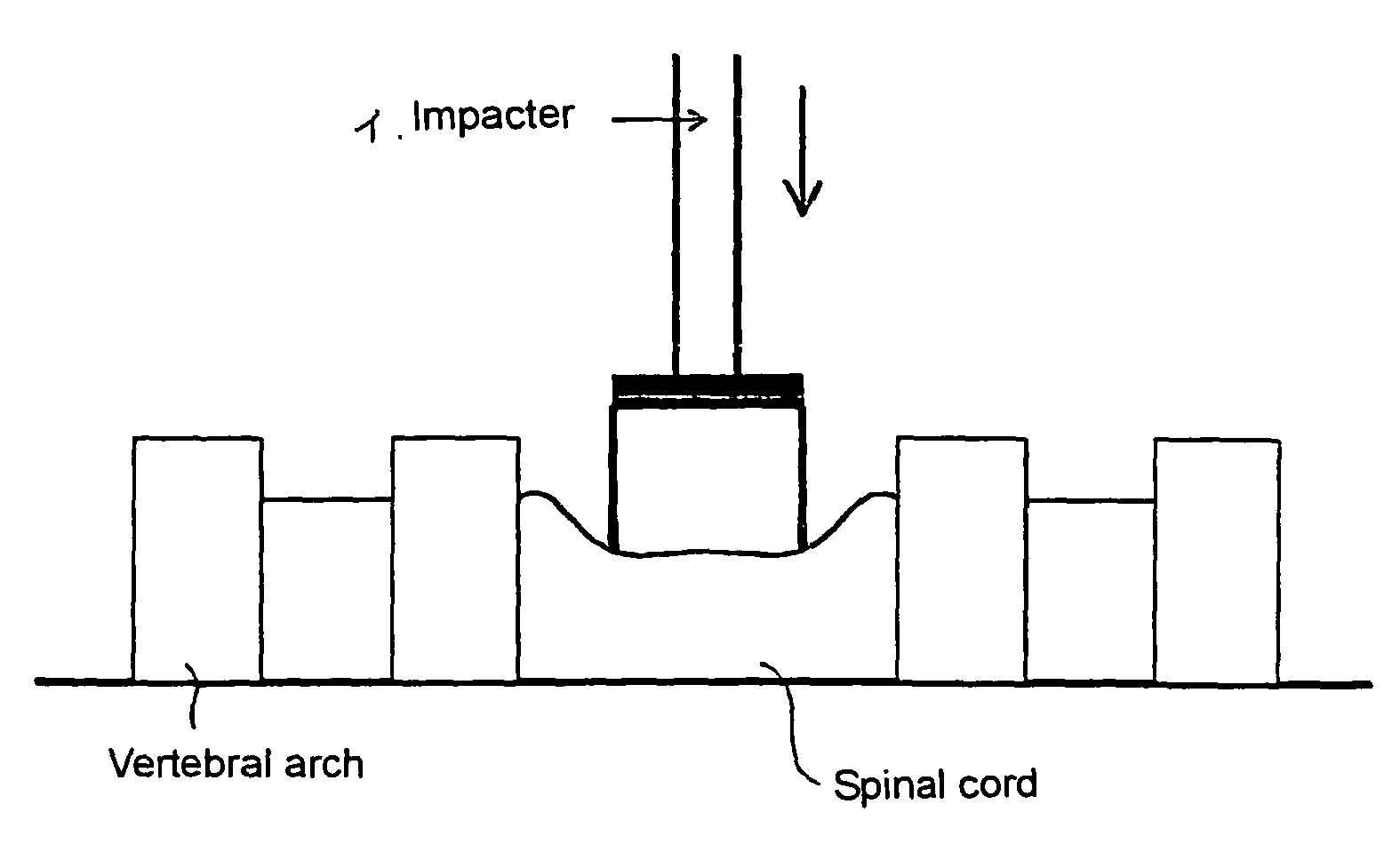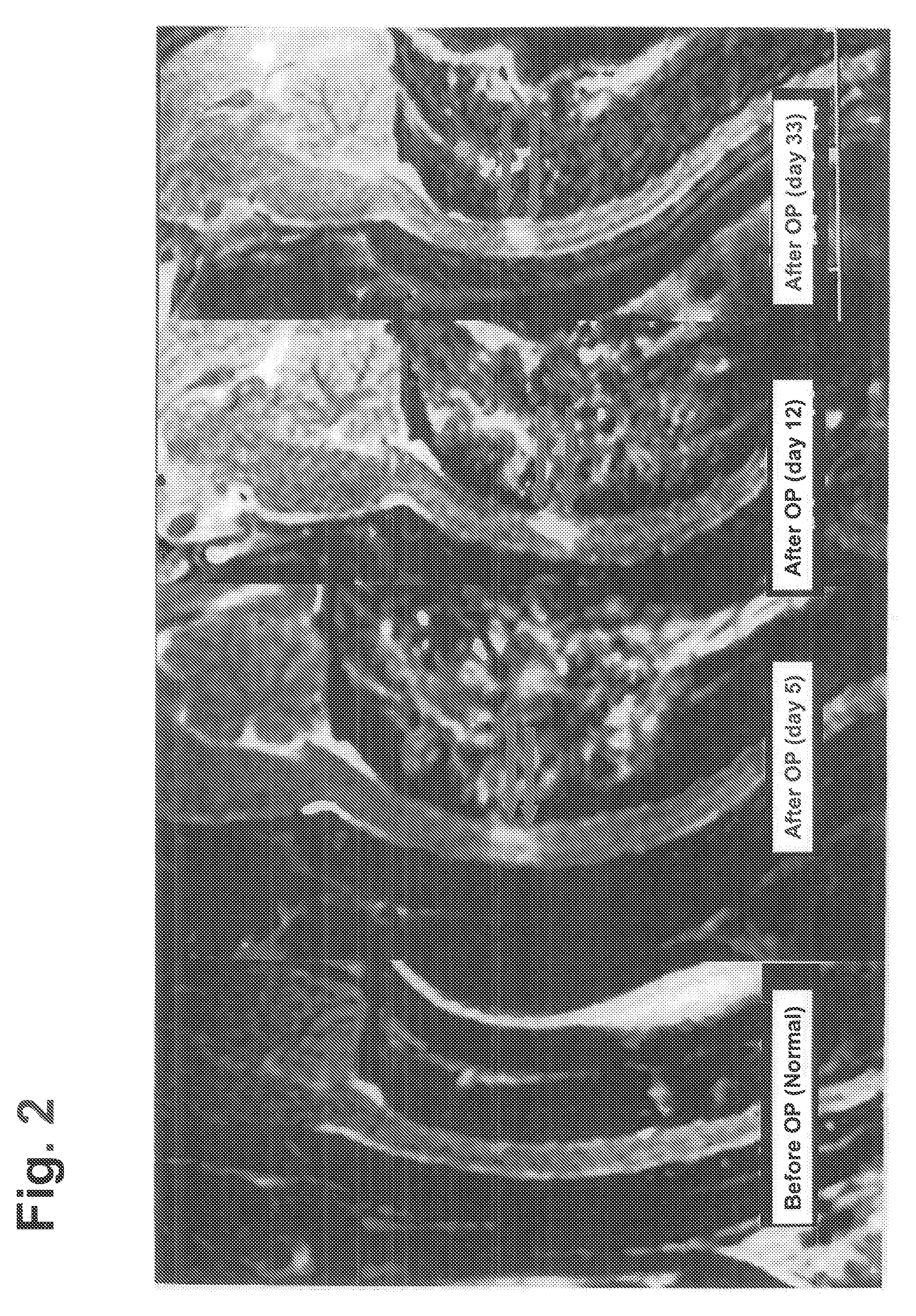Method of constructing spinal injury model monkey and utilization thereof
a spinal cord injury and monkey technology, applied in the field of monkey models of spinal cord injury, can solve the problems of not being able to restore neurons lost by spinal cord injury, not being able to procure such massive human fetal spinal cords, and not being able to apply in practice, so as to achieve the effect of improving motor functions
- Summary
- Abstract
- Description
- Claims
- Application Information
AI Technical Summary
Benefits of technology
Problems solved by technology
Method used
Image
Examples
example 1
Creation of a Monkey Model of Spinal Cord Injury
(1) Surgical Procedure Performed on a Common Marmoset
[0035]Under mixed anesthesia using a combination of xylazine hydrochloride and ketamine hydrochloride or inhalation anesthesia using isoflurane, the 5th and 6th cervical vertebrae are excised to thereby expose the dura mater. A 20-g weight is allowed to fall from a height of 50 mm onto the dura mater at the level of the 5th cervical vertebra, thereby creating a cervical cord injury model. An artificial dura mater is overlaid on the dura mater at the site of laminectomy, followed by surgical wound closure. After the damage was imparted, the animal's bladder was manually drained until the bladder function is improved, and antibiotics are administered as needed in order to prevent infection.
(2) MRI Images and Tissue Staining Images before and after Spinal Cord Injury
[0036]FIG. 2 shows MRI images captured before and after creation of spinal cord injury in a marmoset (20 g, 50 mm). The im...
example 2
Human Neural Stem Cell Transplantation Therapy
[0039](1) Neural stem cells were transplanted to a marmoset which had received a spinal cord injury as described in Example 1. Specifically, a 5 μL solution containing human neural stem cells in an amount of 1×105 / μl was injected, over 10 minutes, into the cavity of spinal injury site of the marmoset which was in the tenth day of injury-imparting operation and had been confirmed to have motor function disorders (transplantation group). As a control, injection of a culture medium alone (5 μl) was employed (non-transplantation group).
(2) Motor functions were monitored for 7 days after transplantation. No clear difference was observed in terms of improvement in motor functions between the transplantation group and the non-transplantation group. When 10 weeks had passed after transplantation, significant improvement in forelimb motor functions was observed in the transplantation group as compared with the non-transplantation group; that is, ...
PUM
| Property | Measurement | Unit |
|---|---|---|
| height | aaaaa | aaaaa |
| height | aaaaa | aaaaa |
| MRI | aaaaa | aaaaa |
Abstract
Description
Claims
Application Information
 Login to View More
Login to View More - R&D
- Intellectual Property
- Life Sciences
- Materials
- Tech Scout
- Unparalleled Data Quality
- Higher Quality Content
- 60% Fewer Hallucinations
Browse by: Latest US Patents, China's latest patents, Technical Efficacy Thesaurus, Application Domain, Technology Topic, Popular Technical Reports.
© 2025 PatSnap. All rights reserved.Legal|Privacy policy|Modern Slavery Act Transparency Statement|Sitemap|About US| Contact US: help@patsnap.com



